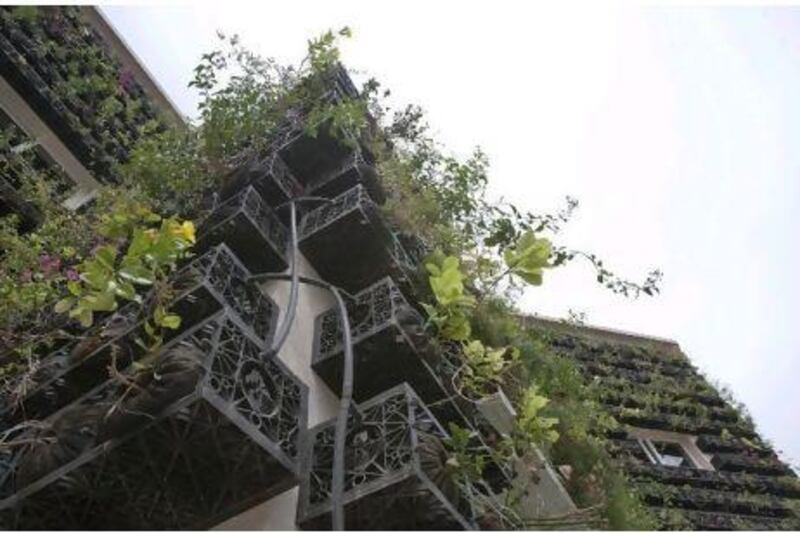DUBAI // A "jungle" school that has covered its walls with plants could become a model for sustainable buildings.
A study of Liwa International School in Al Ain found the plants on the outside of the building reduced interior temperatures by up to 13°C.
The school has 35,000 plants in boxes on the building's facade, covering a total of 3,000 square metres.
The study findings were presented in a paper on new types of sustainable buildings by Dr Mahmoud Haggag, an associate professor in the architectural engineering department at UAE University.
"This kind of green building could have a much wider application, especially in Abu Dhabi where they are looking at buildings that have a lower energy consumption," said Dr Haggag.
He and other faculty members at UAE University carried out tests at the school in July last year.
They measured the temperature over 11 days in two east-facing classrooms: one with a green wall on the exterior, and the other a bare wall.
The room with a bare wall had an average temperature of 56°C, and the room with the green wall had an average temperature of 50°C.
But the study found the temperature difference could vary between 5°C and 13°C.
The paper was presented in June at the International Conference on Relating Design in Nature with Science and Engineering, in Spain.
Dr Haggag said he believed the temperature difference could be even greater now.
"As the level of vegetation grows we will likely see a greater decrease in temperature and a saving of 50 per cent in terms of air-conditioning costs," he said.
The school also has 102 solar panels that power its irrigation system, which in turn uses recycled "grey water" from the school's taps.
In the past year, the school has added fruit and vegetable plants to the green wall.
"We are now growing potatoes and strawberries," said the deputy principal Fayez Jalloul, adding the produce had not made its way into school lunches yet.
"It's not so much at the moment. It's mostly for staff for now."
Mr Jalloul said the school was studying how to expand its green walls.
It has already spent Dh2 million making the buildings environmentally friendly and aims to spend another Dh3m more in years to come.
Mr Jalloul said the priority would be to buy more solar cells and cover the cost of all electricity at the school, excluding air conditioning. But because of the high outlay, it was unlikely to recoup its investment for another 25 years.
"The aim of the project is not saving money," he said. "The most important thing is about the environmental impact and teaching children the importance of saving energy. We want to encourage them to think green."
Mr Jalloul said that at the start of the project some at the school worried the plants would attract large numbers of insects.
"Thank God that hasn't happened," he said.
Meanwhile, Dr Haggag is continuing to conduct studies at the school and in the design room.
He has a theory about combining green walls with a double-skin facade - two walls separated by a cavity - another proven method to reduce temperatures.
Dr Haggag said his team would carry out computer simulations in the coming year to see whether planting vegetation in the cavity may reduce interior temperatures further.
"If it works it will save a lot of money in terms of AC costs," he said. "But not only that, it will also save the environment."






